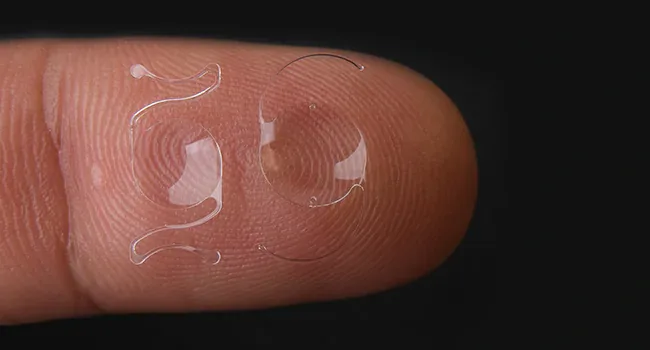Cataract surgery is a well-established procedure that helps restore clear vision by replacing the clouded natural lens with an artificial intraocular lens (IOL). The choice of lens is a critical factor in determining post-surgery vision quality. Understanding the different types of cataract lenses can help patients make informed decisions tailored to their vision requirements.
This article explores the various IOL options available, including monofocal, multifocal, and toric lenses, and the considerations when selecting the most suitable lens.
What Are Cataract Lenses?
Cataract lenses, or intraocular lenses (IOLs), are artificial lenses implanted in the eye during cataract surgery to replace the clouded natural lens. These lenses are designed to restore vision and may offer varying levels of focus, depending on the type chosen.
Cataract lenses are primarily categorised based on their focusing ability:
- Monofocal lenses provide a single focus point, usually for distance vision.
- Multifocal lenses offer multiple focus points, enabling both near and distance vision.
- Toric lenses correct astigmatism in addition to addressing cataracts.
Each type of lens bears advantages and considerations, making it essential to understand their functionalities.
Monofocal Lenses
Monofocal lenses are the most commonly used type of IOL in cataract surgery. They offer a single point of focus, typically for distance vision, while patients may still require reading glasses for near tasks.
Benefits of Monofocal Lenses
- Provides clear vision at a set distance, reducing dependence on corrective eyewear.
- Often covered by insurance as the standard cataract surgery option.
- Minimal visual disturbances, such as halos or glare.
Considerations
- Does not correct presbyopia or astigmatism.
- Patients may need glasses for reading or close-up tasks.
- Ideal for individuals who prefer sharp distance vision with reading glasses.
Multifocal Lenses
Multifocal cataract lenses are designed to provide multiple focus points by holding different optical zones, allowing patients to see clearly at different distances.
Benefits of Multifocal Lenses
- Enables both near and distance vision without the need for glasses.
- Suitable for individuals with active lifestyles.
- Reduces dependence on bifocals or progressive lenses.
Considerations
- Some patients experience halos or glare in low-light conditions.
- An adaptation period may be required to get used to the new visual experience.
- It may not be ideal for individuals requiring precise night vision.
Toric Lenses
A toric lens for cataract surgery is specifically designed for patients with astigmatism. These lenses correct both cataracts and refractive errors, improving overall visual clarity.
Benefits of Toric Lenses
- Corrects astigmatism, reducing the need for additional corrective eyewear.
- Enhances distance vision compared to standard monofocal lenses.
- Provides stable vision correction.
Considerations
- Requires precise alignment for optimal effectiveness.
- Higher cost compared to standard monofocal lenses.
- Not suitable for patients seeking multifocal capabilities.
Monofocal vs Multifocal IOLs
Choosing between monofocal and multifocal lenses depends on individual lifestyle and vision goals.
| Feature | Monofocal IOL | Multifocal IOL |
| Focus | Single focus (usually distance) | Multiple focus points |
| Glasses Requirement | Likely for reading or near tasks | Reduced dependency on glasses |
| Night Vision | Generally good | Some may experience halos or glare |
| Cost | Typically lower | Higher due to advanced technology |
Patients prioritising clear distance vision without visual artefacts may prefer monofocal lenses, while those desiring reduced dependence on glasses may opt for multifocal options.
Choosing the Best Lens for Cataract Surgery
Selecting the right IOL depends on several factors:
- Lifestyle Needs: Active individuals may prefer multifocal lenses, while those prioritising precise night vision may choose monofocal options.
- Budget Considerations: Monofocal lenses are often covered by insurance, whereas premium lenses may require out-of-pocket costs.
- Pre-existing Eye Conditions: Patients with astigmatism benefit from toric lenses, while those with presbyopia may prefer multifocal IOLs.
A consultation with an ophthalmologist is essential to determine the most suitable lens based on individual needs.
Procedure and Recovery
Cataract surgery is an outpatient procedure that typically lasts 15 to 30 minutes per eye. The steps include:
- Application of local anaesthesia and dilation of the pupil.
- Removal of the clouded lens using ultrasound or laser-assisted techniques.
- Implantation of the selected IOL.
- Post-operative care to monitor healing and optimise results.
Recovery usually takes a few weeks, during which patients should follow prescribed eye care routines and avoid strenuous activities.
Conclusion
Understanding the different types of cataract lenses is essential for making an informed decision about vision correction. Factors such as lifestyle, pre-existing conditions, and budget play a crucial role in selecting the right IOL. Consulting an eye specialist can help patients determine the most suitable option based on their unique needs.
Take the first step toward clearer vision! Consult with an eye specialist.
FAQs
What are IOLs made of?
Intraocular lenses (IOLs) are typically made of biocompatible materials such as silicone or acrylic. These materials are chosen for their durability, optical clarity, and ability to safely remain within the eye after cataract surgery.
What is the best lens for cataract surgery?
The choice of the best lens for cataract surgery depends on individual needs. Monofocal lenses offer reliable results, while multifocal or extended depth of focus lenses may reduce dependence on glasses for various distances, but can have visual disturbances.
Which type of cataract lens is the most affordable one?
Monofocal IOLs are generally the most affordable type of cataract lenses.
Monofocal Vs Multifocal lens for cataract surgery?
In Monofocal vs Multifocal lens, Monofocal lenses provide clear vision at one distance, requiring glasses for other ranges, while multifocal lenses offer a broader range of vision but may come with increased risk of visual disturbances like halos and glare. The choice depends on individual preferences and lifestyle considerations.
Which is the newest type of lens for cataract surgery?
Extended Depth of Focus (EDOF) lenses are among the latest types of lenses for cataract surgery, aimed to provide a continuous range of vision, reducing the need for glasses across various distances.
Which lenses are best for cataracts?
Monofocal lenses provide reliable vision at one distance, while multifocal or extended depth of focus lenses offer a broader range, reducing the need for glasses. Consultation with an ophthalmologist helps determine the best fit based on individual preferences and lifestyle.
How does an artificial lens in cataract surgery work?
In cataract surgery, an artificial intraocular lens (IOL) replaces the clouded natural lens and helps light focus onto the retina, enabling patients to see clearly at specific distances, depending on the type of lens chosen.
Which cataract lens provides the clearest vision?
The clarity of vision depends on individual eye health and lifestyle needs. Monofocal lenses offer sharp distance vision, while multifocal lenses provide a broader range of focus.
How often do I need to replace cataract lenses?
Cataract lenses are designed to be permanent and do not degrade over time. They typically last a lifetime without needing replacement.
Can cataract lenses correct astigmatism?
Yes, toric lenses are specifically designed to correct astigmatism while addressing cataracts.
Is cataract surgery painful?
No, cataract surgery is performed under local anaesthesia, ensuring a painless experience. Mild discomfort may be present during the recovery phase.





